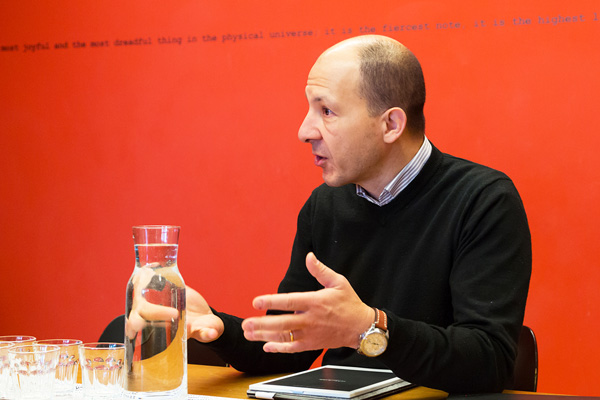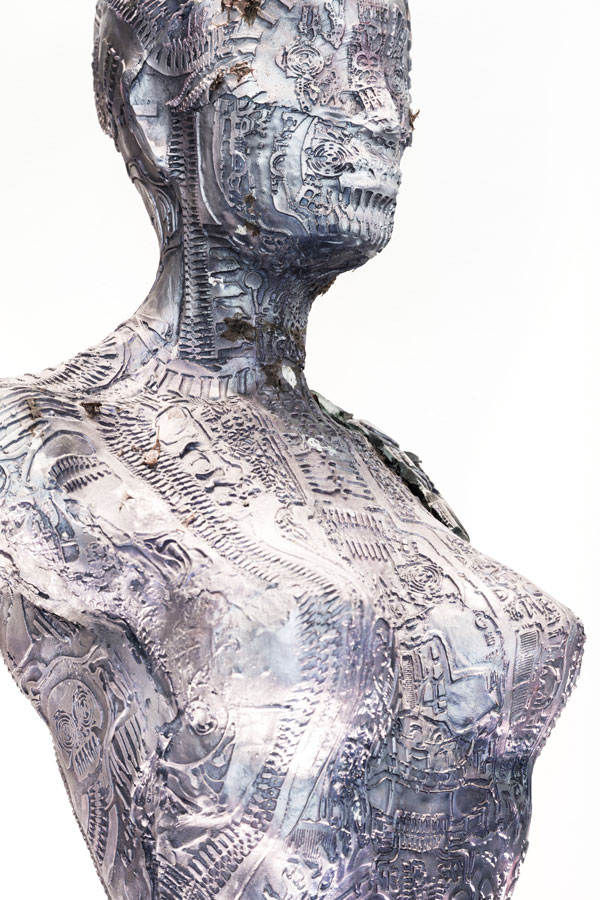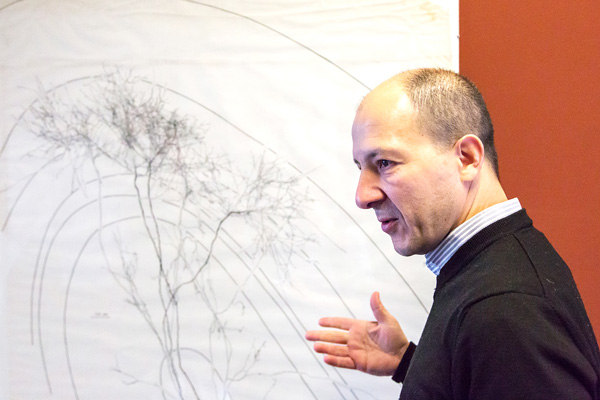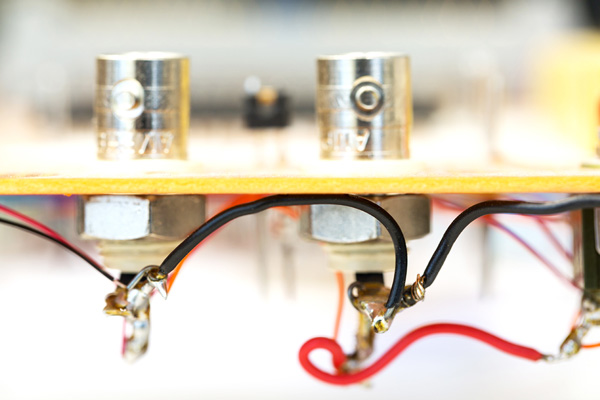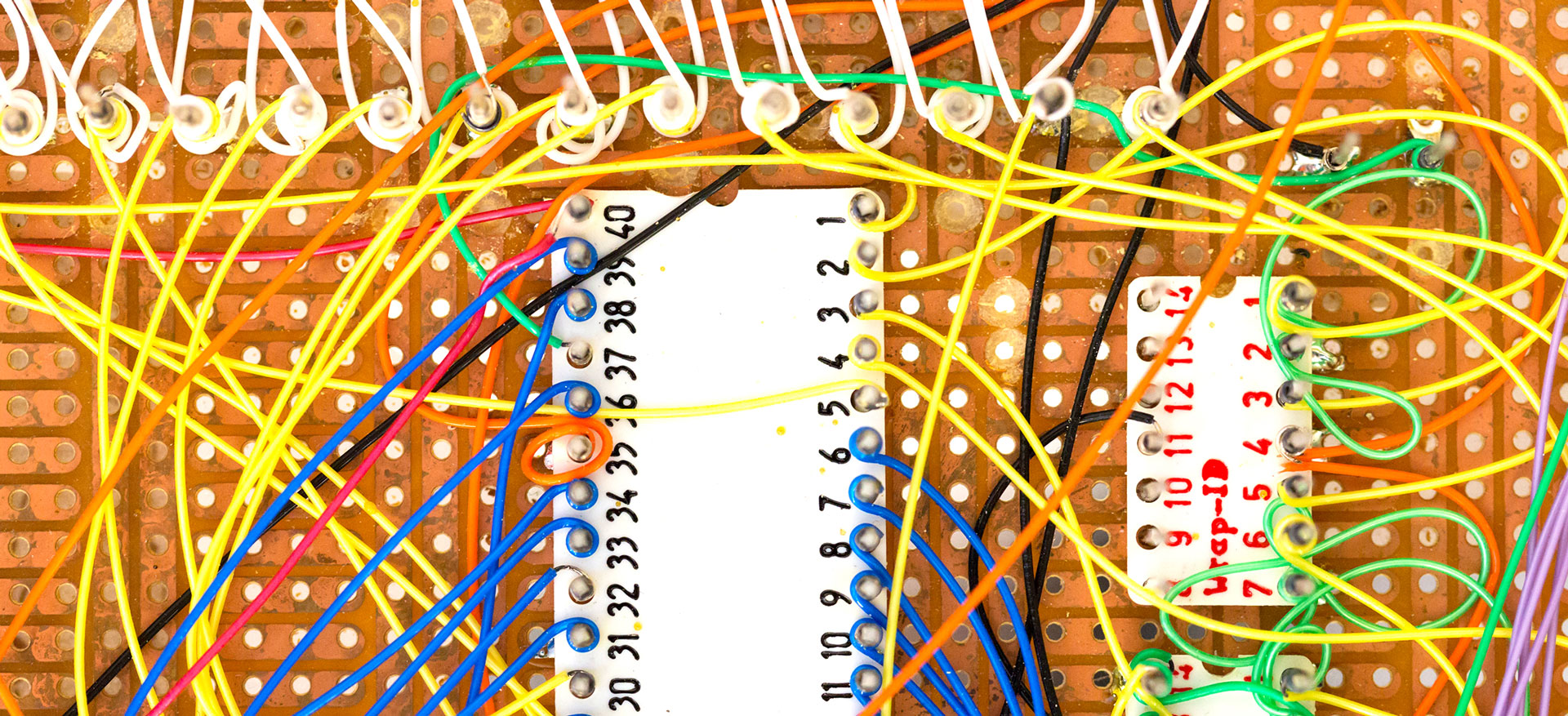
Are a few neurons sufficient to produce intelligence and emotions?
Giacomo Indiveri, Professor at the Institute of Neuroinformatics at the University of Zurich and ETH Zurich, together with his team, attempts at understanding the neuronal structures inside the brain in order to build more efficient and spontaneously responsive computers by means of artificial neurons. Without the support of EU projects, he states, his institute would not be among the world’s best.
Mister Indiveri, you recently attended the EU workshop called «CapoCaccia» in Sardinia. What was is about?
Giacomo Indiveri: It was a kind of summer school organised by our institute within the scope of the ERC Consolidator Grant «NeuroAgents». We brought together computer scientists and neuroscientists, mathematicians, roboticists and other specialists to give some serious consideration to questions related to our research. We equipped the hotel with a technical laboratory – in front of the entrance we were greeted daily by the humanoid robot iCub, which was developed at the Italian Institute for Technology (IIT) also as part of an EU project. The students programmed, simulated neural processing circuits, worked on electronic chips, on hearing sensors, olfactory sensors, visual sensors or robotic arms. We also talked about intelligence and emotions.
About intelligence and emotions?
We discussed whether the structure of the brain was central to intelligence. If you think about it seriously, you quickly arrive at the question of whether a functional unit of neural processing circuits, for example three interconnected neurons, is able to produce intelligence. The Harvard neuroscientist Florian Engert, who attended the workshop, initiated the discussion. He had observed the activity of neurons in zebrafish that had been made visible by fluorescent proteins. He raised the question whether zebrafish were intelligent in spite of their primitive brains and whether they had emotions. Are a few neurons sufficient to experience emotions?
Today we know that fish can experience pain.
The question is how we define «pain» or «emotion». Do we define pain as a mere mechanical reflex to an occurrence or do we understand pain as a feedback loop that allows for more complex answers to an occurrence? We believe that the ability to «have emotions» presupposes such a feedback with information processing. So what about the zebrafish? These questions are difficult because we do not understand many of the processes inside the brain. One of the issues our institute is dealing with is whether the structure of the neural network, that is, the way the neurons are connected together, correlates with the function and hence also with intelligence and emotions and if so, how.
Please give us some details about your research.
We try to understand what happens inside the brain so that we can, for example, learn to speak, so that we can recognise our mother’s voice, so that babies learn how to control their bodies. We explore these natural neuronal structures and processes in order to artificially reconstruct them und use them in computer science. Once we understand the neuronal processes that lead to, let’s say, people’s ability to move and coordinate their arms, hands, legs and feet, then we could build robots that move just as smoothly as humans and animals do.
The technology needed already exists, then?
Yes. But we have far too little understanding of these complex biological processes. This is why we focus our research on the neuronal structures. We are interested in the morphology of the neuronal processes in the cortex. Most artificial neural network researchers so far have analysed the basic properties of simplified neural networks; we are interested in the functionof neural cells and the structure of neural processing circuits. Form and function correlate. The anatomy also determines the function.
«Understanding brains will help people build better computers,» The Economist wrote in 2013. Over the past decades, most of the neuroinformatics scientists and brain researchers considered the human brain as a sort of computer and have tried to understand its functioning from the point of view of a computer model with its central data processing. The Institute of Neuroinformatics of the University of Zurich and ETH Zurich, which was founded in 1995, conducts its research the other way around: It tries to understand the biological structures and functions of the brains to gain insights thereof for the information and communication technology or robotics. The Zurich researchers are especially interested in the shape, the morphology of the neural structures and circuits and their activities. Neuromorphic Engineering is inspired by biology and is yet a young area of research. Giacomo Indiveri and his team want to design computers possessing three properties that have so far been the features of brains alone: Low energy consumption (human brains only use about 20 watts, whereas today’s supercomputers need tens of megawatts); fault tolerance (brains can lose neural structures and circuits often without consequences, once a microprocessor loses a transistor the entire processor becomes inoperative) and adaptation (brains learn and change spontaneously when interacting with the world, computers follow the set programmed paths of an algorithm). «It is our goal to imitate the properties of biological neurons on microchips,» Giacomo Indiveri explains. His institute belongs to the global elite in this area. He has already developed neuromorphic chips containing roughly 1,000 complex artificial neurons and 100,000 synapses. It is true that devices with one million simple artificial neurons were built in the United States, but Indiveri is not interested in producing as many artificial neurons as possible. «It is of no use if we do not understand the neuronal principles. This is why we focus on understanding the fundamentals of form and function of complex neural circuits first.»
Your institute is famous all over the world for its research. What do you do differently?
The institute works in an interdisciplinary manner. When it was founded in 1995, it was the first in Zurich that was associated to both ETH Zurich and the University of Zurich. We are the home to physicists, mathematicians, neuroscientists, computer scientists, bioengineers, electrical engineers and many other specialists. They all have to complete a course in biology as we want to understand the biological principles inside the brain.
«Today, the world’s best researchers
in this field are in Zurich and in Europe.»
We owe this structure to the founders of the institute: ETH Zurich Physics Professor Klaus Hepp who fought for an institute of neuroinformatics when hardly anyone knew about this young branch of research; to the Zurich City Council and the Government Council of the Canton of Zurich which recognised the potential of this research area as well as to the first heads of the institute, Kevan A. C. Martin and Rodney J. Douglas who were both enticed away in 1995 from Oxford University.
When did you join the institute?
I came to Zurich roughly one year after the institute was founded as a postdoc from the California Institute of Technology (Caltech). At Caltech, where the term «neuromorphic» originated at the beginning of the 1990s, the avant garde of Neuromorphic Engineering conducted their research. Today, the world’s best researchers in this field are in Zurich and in Europe. I immediately liked the interdisciplinary approach, this creative thinking, the love of experimentation, the flat hierarchical structures. The atmosphere is still informal. This allows for creativity. It is probably also one of the reasons why the proportion of women at our institute is at almost 50 percent, which is unique in this field. Personally, I never want to leave from here.
The unconventional start of the institute 24 years ago is mirrored still today in its appearance. The offices of the researchers look like living rooms. There are sofas (that look like the researchers also use them as beds), many tall, rampant plants turning the rooms into small oases, wing chairs and hammocks. The walls are decorated with models of neurons, sketches or paintings, and bicycles or wind chimes hang from the ceilings. The halls of the institute show the artwork of John Anderson, one of the members of staff, who accurately reconstructs on paper the neural processing circuits visualised in the brains of mammals. In one corner there is a dark female sculpture by H.R. Giger whose body appears to be covered by a thin neural net. It is obvious that at this institute you do not meet people who work to merely do their job; here, you find dedicated scientists who do not distinguish between their private lives and their profession.
When you came to Zurich, hardly anyone talked about neuromorphology.
Yes, our work was not considered important during the initial years. But it only bound us closer together. Today’s interest in our research displayed by the industry, politics and science has confirmed our intuition. Brain research has become trendy also due to the increased interest in Artificial Intelligence. We had sensed already 25 years ago that our research would become important for the technologies of the future. The brain functions in a completely different manner from a computer. This fact still pushes me every day: I wish to better understand the brain.
How could a better understanding of the brain specifically enhance our technologies?
By means of neuromorphic principles we try to build what we call «autonomous cognitive systems». An example of such as system would be a cochlear implant, that is a hearing prosthesis for deaf people. The implant could then recognise whether the person sits in a concert hall, in a busy restaurant, in a car or walks through a forest and could adapt its capacity accordingly.
«Without the support of EU projects
our institute would not be among
the world’s best.»
The challenge for us is to ensure that the implants would have the same low energy consumption and the same spontaneous reaction capacity as the brain. In the medical field there would be numerous possibilities for this kind of implant.
Ever since the 4th EU Framework Programme you have participated in EU projects, you have taken part in the FET scheme, in ICT and Marie Curie projects, you received three ERC Grants and are now involved in an ECSEL project with interested users.
I know the EU programmes by heart. When the EU decided back in 2002 to promote neurotechnologies it was obvious that we would keep on submitting proposals. In the beginning, the projects were helpful to establish a research community following the biological approach in the first place. With each new project, we were able to attract additional experts to join our institute. However, the EU projects for us were mainly important in the sense that they funded our basic research. Without the support of EU projects our institute would not be among the world’s best.
Were these projects also important for your personal career?
Yes, especially the ERC Starting Grant in 2011. It was quite a shock for me. Up to then, I would submit proposals, receive the awarded funding and then begin the research work. However, the ERC came with a press release and I was invited for faculty meetings within the University of Zurich and ETH Zurich. All of a sudden, people took notice of me. Before, I had been working in the background. Basically, the projects are also career-enhancing for PhD candidates and postdocs. Several of my former PhD candidates are working at renowned technical institutes today. This is what I’m most proud of.
Will you be able to artificially reconstruct the brain?
I will not live to see this happen. The brain is a miracle. But we will be able to better understand small areas of the brain and will be able to make use of this knowledge.
Machines are becoming increasingly intelligent. Will humanity soon become their slaves?
Here, we are back at the question of what intelligence is composed of. I believe that intelligence is related to creativity and only humans are creative. I am not worried that in the near future we will see humanoid robots trying to dominate us. Building artificial humans is very difficult, precisely because we do not understand the major part of the brain. However, I do perceive the software in information and communication technologies as a potential threat. Artificial Intelligence with its algorithms takes more and more decisions for the people and I am a little bit concerned about this development.
Interview with Giacomo Indiveri
Giacomo Indiveri
Giacomo Indiveri the Director of the Institute of Neuroinformatics at the University of Zurich and ETH Zurich. He completed his studies in Electrical Engineering at the University of Genoa and worked as a Postdoc at the California Institute of Technology from 1994 to 1996 before joining the Institute of Neuroinformatics.Indiveri received his Habilitation in 2006 at ETH Zurich in Neuromorphic Engineering. His team analyses natural neural processing systems and builds hardware with neuromorphic cognitive systems that are capable of learning from external stimuli, internal conditions and behavioural targets and thus act spontaneously in correspondence. Indiveri is the co-founder of two spin-off companies of the University of Zurich: The neuromorphic intelligence firm aiCTX manufactures neuromorphic mixed-signal processors with a low energy consumption and a low latency performance. The iniForum GmbH has been established to conceptualise innovative events, exhibitions, workshops and conferences in the domains of science, philosophy, medicine, computation, engineering and related topics. Both start-ups are registered in Zurich.

